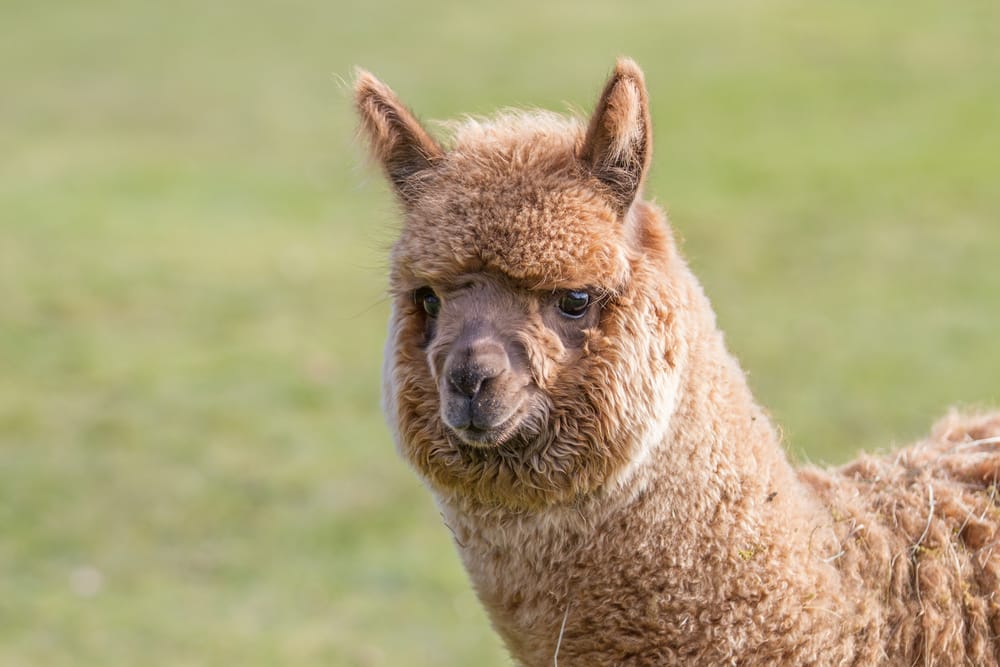Buckle up, folks! We’re about to take a deep dive into the world of alpacas, those cute and cuddly creatures that have won the hearts of animal lovers everywhere. Get ready to learn about their amazing fiber, hilarious antics, and all the other things that make them so darn adorable.
Fun Facts About Alpacas
Get ready to have your mind blown with these fascinating tidbits about alpacas!
- Team Players: Alpacas are highly social and prefer the company of their herd. Each herd has a hierarchy, often with a dominant male leading the pack.
- Alpaca Chatter: Forget barking and meowing, alpacas communicate through soft hums, clicks, and even a warning call for danger. Some experts believe these vocalizations express a range of emotions and intentions.
- Fashion Icons: Alpaca fleece, prized for its softness and warmth, represents only about 10% of their total body weight.
- Eco-Warriors: Alpacas tread lightly on the environment with their soft hooves, minimizing soil damage. Their fleece is biodegradable, making them sustainable fashion stars.
- Fireproof Fluff: Unlike many other animal fibers, alpaca fleece is naturally flame-resistant, making it a safe and unusual choice for textiles.
- Potty Training Pros: Alpacas can be potty trained, suggesting a high level of intelligence and adaptability.
- Happy Feet: “Pronking,” a joyful leap and bounce, is how alpacas express excitement and joy.
- Boys vs. Girls: Male alpacas are typically larger than females and possess more prominent teeth, which might play a role in attracting mates.
- Spit Happens (But Not Always): Alpacas, unlike their llama relatives, reserve spitting for extreme annoyance, preferring to communicate through clicks and chases.
- Friends ‘Til the End: Alpacas form lifelong social bonds and rely on their herd for companionship and protection.
- Andean Roots: Alpacas, domesticated for over 6,000 years, hold deep cultural significance in the Andes, particularly for their role in traditional textiles.
What is special about alpacas?
Okay, so we’ve talked about where alpacas come from, but what makes them so unique?
It’s All About That Fleece
Firstly, have you felt alpaca wool? It feels more luxurious than regular sheep’s wool, and it’s warmer, too! Alpaca fleece is popular for high-end clothing because it’s incredibly soft. And here’s a fun fact: alpaca fleece is naturally fire-resistant. Yep, you read that right! It adds a whole new level of safety that you don’t get with other animal fibers.
But it’s not just the fleece. Alpacas have these incredibly cute faces with big, soulful eyes. They just have this gentle, curious vibe that instantly melts your heart.
Alpaca Social Life
Imagine living in a herd high up in the Andes mountains. That’s alpaca life! They are very social and have their own societal structures. The males can be a bit bossy, establishing a hierarchy with the most dominant male leading the pack. But don’t worry, they’re not constantly fighting. Alpacas are pretty affectionate with each other. They love to cuddle and nuzzle, especially within their family groups. They often hum when they’re feeling content, which is thought to be their way of saying, “Life is good!” Of course, if they sense danger, they’ll let out a warning call to alert the entire herd. Oh, and have you ever seen an alpaca “pronk”? It’s the cutest thing ever! They basically jump and bounce around like they’ve got springs in their feet – pure joy!
Built for the Andes
Living high up in the Andes Mountains is challenging, but alpacas are built for it. Their thick fleece isn’t just luxurious; it’s their secret weapon against the freezing temperatures. It’s like having a built-in winter coat! And their respiratory system? Top-notch! They’ve adapted to deal with the thinner air at high altitudes. Alpacas are easy on the environment. They’re light grazers, so they don’t tear up the land like some other livestock. Plus, their fleece is completely biodegradable. Talk about sustainable style!
A History with Humans
Alpacas have been hanging out with humans for over 6000 years! The Incas were the first to realize how special alpacas were. They recognized the value of their fleece and their gentle nature, and alpaca domestication took off. To this day, in many Andean communities, alpacas are still incredibly important. Their fleece is used for traditional clothing and blankets, and they play a significant role in cultural ceremonies. It’s a beautiful bond that has lasted for centuries!
Still Learning!
While we know quite a bit about alpacas, there’s always more to learn! Researchers are still studying their behavior, genetics, and how they’ve adapted so well to their unique environment. Who knows what other cool alpaca secrets we might uncover in the future!
Did you know these alpaca facts?
Alpacas have been hanging out in the Andes Mountains for over 6,000 years! That’s longer than the Egyptian pyramids have been around! It’s no wonder we’re so fascinated by these fuzzy creatures. Let’s dive a little deeper into what makes alpacas so unique:
What makes them different?
- First off, you won’t find alpacas roaming free in the wild. They’re actually descended from vicuñas, but were domesticated ages ago in South America. Today, you’ll mostly find them living it up in the high plains of Peru, Bolivia, and Chile.
Living the herd life:
- Alpacas are all about their herd. They stick together, led by a dominant male, and you can practically feel the love in their little hums. It’s like their way of saying, “Life is good!” And if you’re lucky, you might even catch them “pronking” – a super cute, bouncy leap that’s sure to make you smile.
Eco-warriors in disguise:
- Their fleece is seriously impressive. Not only is it incredibly soft and warm, but it’s also biodegradable! That means it breaks down naturally, unlike synthetic fabrics. Plus, alpacas are pretty light grazers, so they don’t tear up their Andean home. Oh, and did I mention their poop is like magic fertilizer? Talk about eco-friendly!
Built for the mountains (and more!):
- Living high up in the Andes isn’t easy, but alpacas are pros. They’ve got special lungs that help them breathe the thin air, and their thick fleece keeps them warm even when it’s freezing. Unlike their llama cousins, known for carrying heavy loads, alpacas are the stars of the show when it comes to luxurious fleece.
More than just fluffy friends:
- For centuries, Andean cultures have treasured alpacas. Their fleece has been woven into beautiful clothing and blankets, and they even play important roles in traditional ceremonies. These days, more and more people are discovering the calming presence of alpacas, finding them to be comforting companions.
There’s still so much to learn about these captivating creatures, and ongoing research continues to unveil even more about their unique adaptations, social complexities, and the full scope of their historical significance.
What are some fun facts about baby alpacas?
Did you know that baby alpacas, called “crias,” often choose dawn to make their grand entrance into the world? And while they might come across as a bit shy at first, these adorable fluffballs are actually quite the social butterflies. They love hanging out in groups and are especially inseparable from their moms.
Speaking of moms, cria moms are fiercely protective and communicate with their little ones through soft humming sounds, gentle nudges, and expressive body language. You might even mistake a cria for a baby llama at first glance, but don’t be fooled! These youngsters have their own unique way of talking and interacting with the world around them.
One of the most amazing things about crias is their incredible sense of balance and coordination. Almost as soon as they’re born, they’re up on their wobbly little legs, taking their first steps and exploring their surroundings with curious sniffs and gentle touches. It’s truly a sight to behold!
There’s still so much we’re learning about these fascinating creatures, so who knows what other surprises baby alpacas have in store for us!
Why are alpacas so famous?
So, we’ve been talking about alpacas, those fluffy creatures that seem to be everywhere these days. But have you ever stopped to wonder why they’re so popular? What makes these animals so appealing?
First off, let’s talk about that fleece! Alpaca wool is incredibly soft, warm, and surprisingly durable. Imagine wrapping yourself in a cloud – that’s what alpaca wool feels like. Tiny air pockets within the fibers trap heat, keeping you toasty even on the chilliest days. And, alpaca fleece is naturally hypoallergenic, meaning it’s less likely to irritate sensitive skin than other wools.
But the appeal of alpacas goes far beyond their luxurious fleece. These animals are eco-champions! They’re incredibly gentle grazers, which means they don’t tear up the land like some livestock. On top of that, their fleece is biodegradable and even flame-resistant, and raising alpacas requires significantly less water and chemicals compared to traditional livestock farming.
Now, let’s talk about their resilience. Alpacas are native to the high-altitude regions of the Andes Mountains, meaning they’re used to extreme temperatures and rugged terrain. They’ve evolved a special four-chambered stomach that allows them to efficiently digest tough, coarse vegetation. Their thick fleece acts like a natural insulator, protecting them from the biting cold and harsh weather conditions of their mountain home. This hardiness makes them a valuable asset for farmers in challenging environments.
Alpacas are incredibly social animals. They live in herds with a strong sense of community, communicating through a fascinating mix of vocalizations and body language. They hum, they click, they even have a special “alarm call” to warn each other of danger. And believe it or not, these fluffy camelids are pretty smart! They can be trained, and they form strong bonds with their human caretakers.
Finally, we can’t forget the cultural significance of alpacas. For centuries, they’ve played a vital role in the lives of Andean communities. Their images grace ancient textiles, pottery, and artwork, a testament to their historical and economic importance. Today, alpacas are seen as symbols of sustainability, animal welfare, and the rich cultural heritage of the Andes.
So, there you have it! Alpacas are more than just cute faces. They’re incredible creatures with a fascinating history, a gentle nature, and a whole lot to offer the world.
What is a funny fact about alpacas?
We’ve talked about how chill alpacas usually are, but these fluffy pals have a trick up their sleeve: they can spit!
Now, don’t worry, they mostly reserve this for settling scores within their herds. It’s like their way of saying “back off!” However, if an alpaca is feeling seriously threatened or super irritated, there’s a chance they might direct a little spit-surprise at a human. It’s probably best not to give them a reason to, right?
How Do Alpacas Show Love?
Alpacas have their own unique ways of showing affection. Let’s explore how these fluffy creatures express their love:
Nuzzling and Rubbing: Alpaca Hugs
Just like a gentle hug between friends, alpacas show affection through gentle nuzzling and rubbing, especially moms with their babies (“crias”). It’s their way of saying, “I love you.”
Humming with Happiness: Alpaca Lullabies
Those soft humming sounds alpacas make? That’s their way of communicating comfort and reassurance. It’s like their version of a lullaby.
Guardians of the Herd: Alpaca Protection Squad
Alpacas take their love seriously, and that includes protection. When they care about another alpaca, they’ll stand close by, forming a protective barrier against anything they see as a threat.
Sharing is Caring: The “Cud” is Real
In the alpaca world, “cuddling” means sharing partially digested grass. It might sound a little gross to us, but it’s actually a sweet gesture of care and nourishment between alpacas.
Lifelong Bonds: Alpaca BFFs
Alpaca herds are all about strong connections, especially between mothers and their young, which can last a lifetime! They graze, rest, and strengthen their bonds through grooming and cuddling.
Unraveling the Mysteries: Alpaca Love in Progress
While we’ve learned a lot about how alpacas show affection, there’s still more to discover. Ongoing research will likely uncover even more about their emotional depth.
What is the purpose of owning an alpaca?
So you’re thinking about alpacas? People bring these fluffy fellas into their lives for all sorts of reasons!
1. Like a Big, Soft Teddy Bear
Alpacas actually enjoy the company of humans and are known for being gentle and playful. They’re curious, too, always up for seeing what you’re doing. Many alpaca owners say these animals bring a real sense of peace and happiness to their lives.
2. Alpaca Fleece: Think Cashmere, But Better
Alpaca wool is crazy soft and warm! It’s softer than sheep’s wool, warmer than cashmere, and even water-resistant. Many alpaca owners shear their alpacas once a year and use the fleece to make all sorts of cool stuff: yarn, sweaters, blankets, you name it! Some even sell it.
3. Eco-Friendly Farmhands
Alpacas can be a real asset on a farm or homestead. They’re natural grazers, keeping weeds down without harming your pastures the way goats sometimes do. Their poop makes amazing fertilizer. Alpacas are pretty low-maintenance animals; they don’t need a ton of space, and they’re generally healthy.
4. An Investment in Fluffiness (and Maybe Profit!)
Alpacas can be a good investment. Their value has been steadily increasing over the years. People are willing to pay top dollar for their luxurious fleece, and if you decide to breed alpacas, baby alpacas (called crias) are in high demand.
But hold on a sec!
It’s important to remember that owning any animal is a big responsibility. Before you run out and buy an alpaca, make sure you’ve got the space, the resources, and the time to give these incredible animals the care they need. Do your research, find a reputable breeder, and be prepared to welcome some serious cuteness (and maybe a bit of spit) into your life!
Why do people love alpacas?
Alpacas seem to be taking the world by storm, and it’s not hard to see why. They’ve got this undeniable charm.
One of the biggest draws is definitely their fleece. It’s incredibly soft, warm, and hypoallergenic.
Alpacas are eco-warriors in disguise! Their grazing habits are actually good for the land, and their fleece is completely biodegradable.
Let’s talk about personality. Alpacas are social animals. They communicate with these cute little hums and love to be around each other. They even nuzzle and share their food. Plus, they’re smart and can be trained, so they can become real companions.
Some scientists believe that hanging out with alpacas might be good for you! Their calm and gentle nature seems to have a calming effect on people, potentially reducing stress and lowering blood pressure. There’s even research being done on using alpacas in therapy.
And to top it all off, these fluffy guys are adaptable and can live in all sorts of climates. This makes them great for farmers and people looking for a unique companion.
So, why do people love alpacas? It’s a combination of factors: their luxurious and sustainable fleece, their gentle and social nature, their potential therapeutic benefits, and their adaptability.
What do farmers do with alpacas?
Farmers raise alpacas for a bunch of different reasons.
One of the biggest draws is their fleece. Farmers shear their alpacas usually once a year. This fleece then gets turned into all sorts of cozy goodies, like yarn for knitting, luxurious clothing, and even super-soft bedding.
Some farmers raise alpacas for their meat. It’s gaining popularity as a lean and flavorful alternative to beef.
Alpacas can be surprisingly strong and sure-footed. In some areas, farmers have found them to be really helpful as pack animals. They can navigate tricky terrain, making them great for carrying supplies across long distances.
While we have a good understanding of these uses for alpacas, research is ongoing in areas like optimizing fleece quality and exploring the potential benefits of alpaca milk.
Why are alpacas valuable?
Alpacas’ claim to fame is their fleece. It’s seriously soft – we’re talking softer than cashmere and warmer than sheep’s wool. This luxurious fiber is a big deal in the textile world.
But here’s another cool thing – alpacas are eco-friendly grazers. Unlike some other livestock, they don’t tear up the land when they graze. Plus, their fleece is biodegradable.
These adaptable animals aren’t picky about where they live. They’re quite comfortable in a variety of climates. This makes them pretty easy keepers.
Speaking of friends, alpacas are super social. They love hanging out in their herds, and they’re not afraid to show some affection. This social nature, combined with their calmness, makes them surprisingly good therapy animals. Some folks find that just being around alpacas can lower stress and even help with anxiety.
And let’s not forget the economic side of things. Alpacas can be a good investment, especially if you’re into the whole fiber game. People are willing to pay top dollar for their luxurious fleece, and breeding them can be profitable too.
Of course, like any agricultural venture, raising alpacas comes with its own set of challenges.
Alpacas are much more than just cute faces. They’re valuable for their fiber, their gentle nature, and their potential as a sustainable investment.
For more fun facts about animals, check out these articles:
- Fun facts about chihuahuas will blow your mind! Did you know that a Chihuahua can jump as high as five times its own height?
- Fun facts about manta rays will amaze you! Did you know that a manta ray can have a wingspan of up to 29 feet?
- Guatemala vs. Costa Rica: Plan Your Trip Smartly - April 16, 2025
- Master Types of Pumps: Ultimate Guide to Selection - April 16, 2025
- Unlock Types of Makeup Secrets: Master Any Look Now - April 16, 2025

















1 thought on “Unraveling the Alpaca: Fun Facts About These Fluffy Camelids”
Comments are closed.